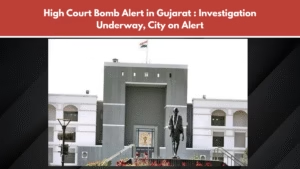Smart electricity meters From Vision to Delay: The Collapse of India’s Smart Meter Ambition

Smart electricity meters
Smart electricity meters : The government’s ideal of “smart electricity meters” was smashed by power companies, and eight years later, the goal has not been reached.
The Indian government launched a bold plan in 2015 to use smart electricity meters to transform the nation’s power distribution infrastructure. These gadgets were hailed as the energy efficiency of the future since they were made to provide real-time tracking, lower losses, and improve billing systems’ accountability and transparency. The goal was clear: deploy 250 million smart meters nationwide, which could significantly reduce electricity theft and improve the customer experience.

Following discussions with four power distribution firms, the Gujarat state government made the decision to install smart electricity meters. By the end of December 2019, 8.79 lakh smart electricity meters were to be installed. This issue was not given much thought by the electricity distribution corporations themselves. Consequently, the government’s vision of smart electricity meters was shattered by the power distribution firms. Nonetheless, people continue to hold the false belief that there isn’t yet a location suitable for the installation of smart power meters.
The goal for smart electricity meters was not attained.
The installation of smart power meters in Gujarat was planned in 2017. Following consultation with the North Gujarat Electricity Company, Central Gujarat Electricity Company, South Gujarat Electricity Company, and West Gujarat Electricity Company, the state government made the decision to install smart electricity meters. It was determined that consumers of electricity who used more than 500 units were classified as belonging to Category-1, and those who used more than 200 but less than 500 units were classified as belonging to Category-2.
By December 31, 2017, 2.47 lakh category-1 power users were to have smart meters installed. By December 31, 2019, it was agreed that 6.32 lakh category-2 electricity users would have smart meters installed. 23,333 category-2 and 2715 category-1 smart electricity meters were deployed in order to meet this goal. Only 26,000 smart electricity meters were installed out of the 8.79 lakh that were intended to be deployed.
Problem of electricity connection in rural areas :
The power providers’ careless handling of the smart electricity meter issue was revealed by the CAG report. There were just 26,000 smart power meters installed by the Gujarat Power Company. However, not a single smart meter had been deployed by the other three power distribution firms. The power providers also offered the flimsy justification that installing smart electric meter is not feasible in rural regions due to issues with electrical connections. The goal of smart electricity meters has not been met even after eight years.
The Vision: Why Smart Meters Mattered :-
The smart electricity meter is essentially a digital gadget that logs electric energy use at hourly or smaller intervals and transmits that data to the utility for billing and monitoring. In contrast to conventional meters, these provide:
- Real-time monitoring
- Two-way communication
- Remote connect/disconnect functionality
- Accurate billing, with reduced human errors
- Detection of energy theft and technical losses
Smart meters were seen by the Indian government as a remedy for a structural issue. Discoms, or power distribution businesses, were suffering enormous financial losses as a result of theft, leaks, and ineffective billing systems. It was hoped that smart meters would close these gaps and bring about efficiency, transparency, and consumer empowerment.

The concept was both economic and technological. By increasing collection efficiency and reducing transmission and distribution losses, a strong smart metering system might save India billions of dollars. In order to revitalize financially troubled electricity providers, the strategy was incorporated into larger programs like UDAY (Ujwal DISCOM Assurance Yojana) and eventually the Revamped Distribution Sector Scheme (RDSS).
A Promising Start: Targets and Implementation :-
The roadmap was laid out in phases:
- 2015–2018: Pilot projects and initial rollouts in urban areas
- 2018–2021: Scale-up to 25–30 million meters
- 2021–2025: National-level implementation targeting 250 million installations
For early implementation, states such as Delhi, Uttar Pradesh, Haryana, and Bihar were selected. In order to enable private vendors to install and oversee smart meter systems under the TOTEX (Total Expenditure) model—in which discoms would reimburse suppliers over time through operational savings—the government also promoted Public-Private Partnerships (PPPs).
Policies also required that smart meters be installed on all new connections and that older ones be gradually replaced.
On paper, everything appeared to be fine. On the ground, though? Not at all.




